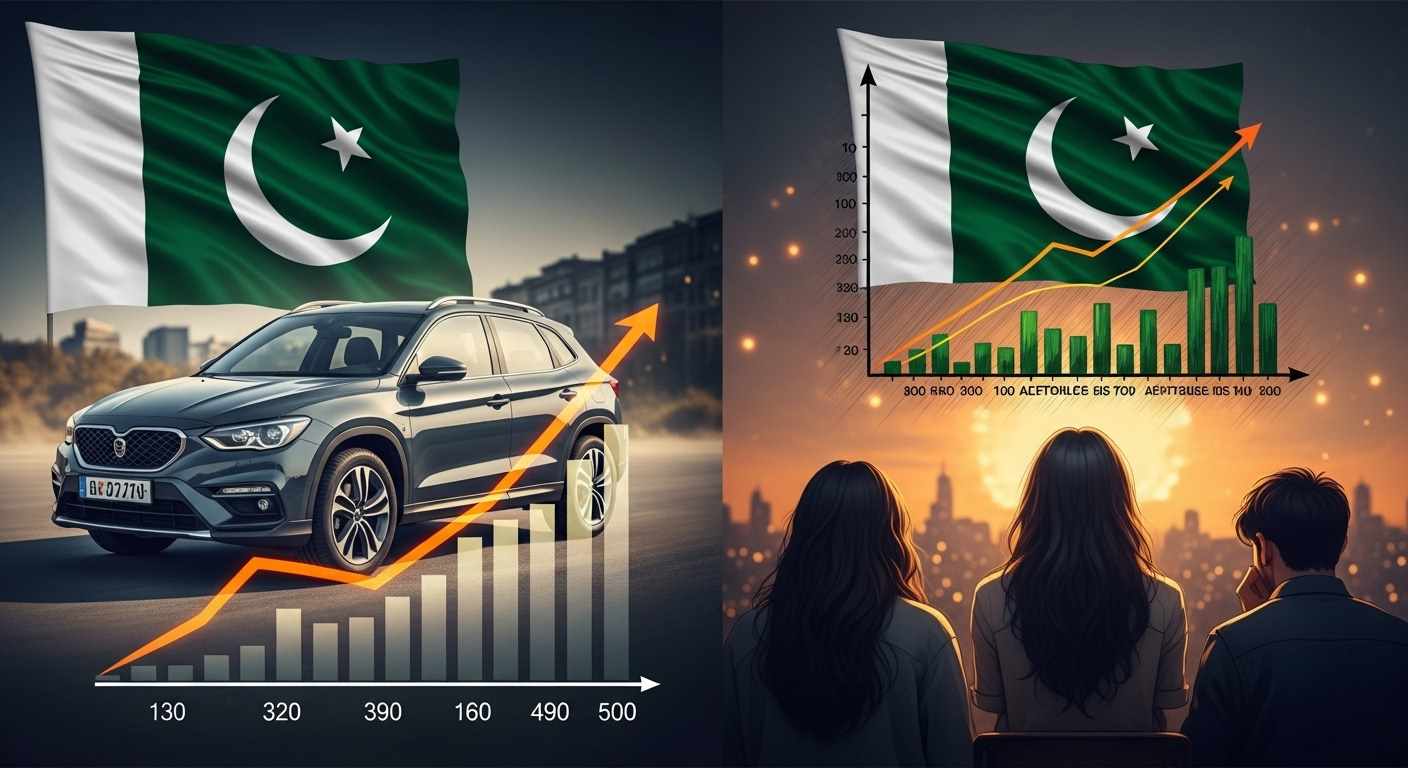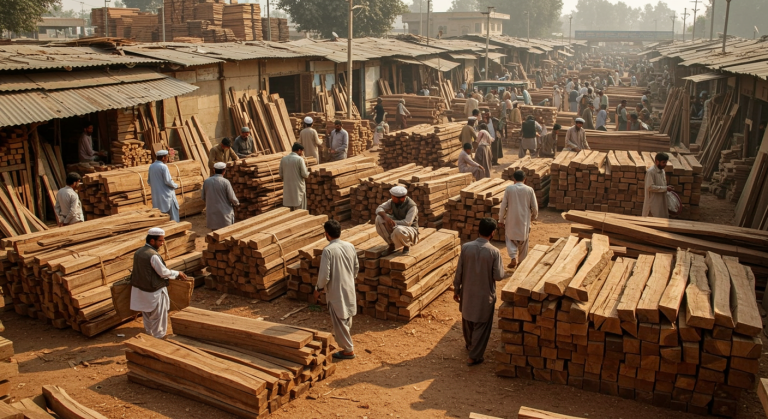Pakistan’s Auto Sector Squeezed: Why Vehicle Prices Are Climbing in 2025

Pakistan’s auto industry is witnessing a sharp surge in vehicle prices, leaving buyers uncertain and putting pressure on dealers to adjust to the swiftly evolving market conditions.
From escalating taxes to global economic turbulence, a confluence of factors is at play. This report delves into the reasons behind the trend, examines its impact on buyers and manufacturers, and explores potential policy avenues to ease the burden on citizens.
- Fiscal pressures and new levies
In its 2025–26 budget unveiling on June 10, the government introduced several new fiscal measures targeting vehicles. Key among them:
Sales tax increase: The existing GST of 12.5% on cars (engine ≤ 850 cc) has been raised to 18%.
Climate Support Levy (CSL): A one-time surcharge on petrol/diesel/hybrid cars, ranging from 1% (≤ 1,300 cc) to 3% (> 1,800 cc).
Petroleum carbon levy: An additional Rs 2.5‑per‑liter “carbon tax” on fuel, set to double to Rs 5 next year. Combined, these changes are expected to add roughly Rs 600,000 to the cost of locally assembled cars.
- Rupee depreciation and import dependencyRupee Devaluation and Reliance on Imports
A major portion of Pakistan’s auto industry relies on imported parts and completely knocked-down (CKD) units. Over recent years, the Pakistani rupee has seen significant depreciation, which has not only reduced consumers’ purchasing power but also driven up the cost of bringing in foreign components.
.For example, a 40% depreciation between 2020 and 2024 translated to steeper local prices – both for fully built imports and CKD-assembled vehicles.
- Heavy taxes and limited local manufacturing
Although Pakistan assembled about 7% of GDP and claimed significant automotive output, local manufacturing is still restricted to CKD operations aided by major firms like Honda, Toyota, and Suzuki
tribune.com.pk
The rest of the supply chain — engines, electronics, body-shells — depends on foreign suppliers. With import duties reaching 50–200% depending on engine size, costs escalate significantly
- Inflation and production costs
Even before new taxes, local production faced mounting pressures: rising raw material costs, outdated plant infrastructure, and high labor expenses compared to regional peers . Manufacturers, already squeezed for margins, are passing these costs onto consumers. - Eased credit conditions fueling demand — and prices
Ironically, a drop in interest rates and more accessible vehicle financing—some banks offering attractive instalment plans—has led to rapid demand, even under painful pricing conditions
Despite the continuous rise in car prices, vehicle sales saw a 32% increase over 11 months, reaching 94,388 units. This unexpected boost in demand has given manufacturers more room to raise prices even further.
- Supply chain disruption and limited competition
Global chip shortages and logistic slowdowns have reduced vehicle availability, tightening supply. At the same time, the market lacks fierce competition: despite entries from Changan, MG, Proton, and Hyundai, legacy brands like Toyota, Honda, and Suzuki still dominate, giving manufacturers pricing power. - Economic fragility and foreign exchange scarcity
Pakistan’s broader economic instability – including weakening external accounts, heavy debt, and reliance on IMF-backed stabilization packages – has further depressed the rupee and forced the government to prioritize revenue. This macro scenario perpetuates high duties and exchange-driven pricing pressure .
Consumer impact: who’s paying the price?
Middle-income and first-time buyers are bearing the brunt. Entry-level cars are becoming out of reach: vehicles like Suzuki Alto (~660 cc) previously retailing near PKR 2.5 million may now cost an additional Rs 600,000 just from tax hikes . For buyers considering C-segment sedans, hybrids, or SUVs, taxes and levies accumulate rapidly, disproportionately affecting the middle class.
Despite these challenges, many consumers remain undeterred. The current trend shows continued purchases as people rush to buy before further hikes. However, such demand may not be sustainable—and could plunge the sector into volatility.
Manufacturer struggles
Producers face declining sales volume (per vehicle) which limits economies of scale. Dealers report stocks lingering longer, creating cash-flow constraints. Yet, they find little choice but to pass costs onto buyers.

